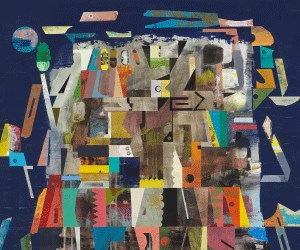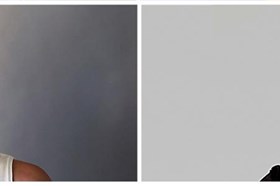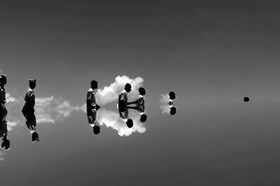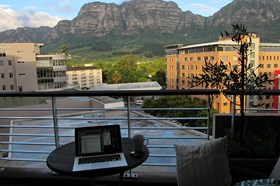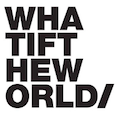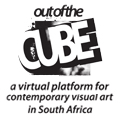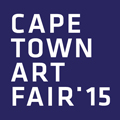artthrob artbio
David Goldblatt
By Amy Halliday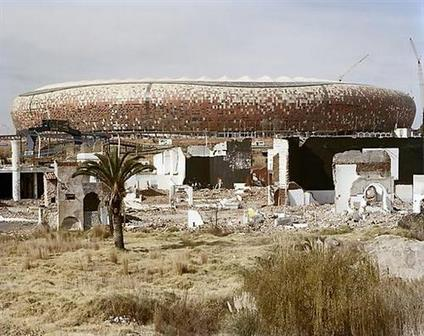
David Goldblatt
The ruins of Shareworld and FNB-Soccer City Stadium. Shareworld, intended as a theme-park to the people of Soweto, was built and went bankrupt in the late 1980s,
6 June 2009.
Digital print in pigment inks
.
A relentless visual archaeologist of the myriad ideas, values, stories and struggles embedded in the social and physical landscapes of South Africa, David Goldblatt has been photographing the country for over half a century. Recipient of the prestigious Hasselblad Award in 2006 and the Henri Cartier-Bresson Award in 2009, his long and rich photographic career has increasingly been brought into focus through the lens of numerous local and international exhibitions, and expanded scholarly critique.
Born in 1930, and raised in the small gold mining town of Randfontein, Goldblatt is the son of Lithuanian Jews who fled the pogroms in the 1890s. He began taking photographs in his youth, but, in addition to his obligation to the family’s men’s outfitting business and pursuing a commerce degree at the University of the Witwatersrand, he did not see compelling local precedents or opportunities for the kind of photographic work in which he was interested (a seemingly unattainable combination of urban glamour and social critique pictured in international magazines like Life and Picture Post).
After his father’s death in 1962, however, he sold the business, determined to become a dedicated photographer. His early work – influenced by the rhetorical demands of photo essay commissions for newly cosmopolitan magazines like Optima and the South African Tatler – tended towards a highly expressive style. Over time, however, he developed a more ‘contemplative’ approach. It is this characteristic restraint – which nonetheless speaks volumes – for which he is most well known, particularly in his projects rooted in high apartheid, such as In Boksburg (1982) and Lifetimes: Under Apartheid (1986).
art events calendar
VIEW FULL CALENDARbuy art prints
edition of 25: R4,300.00
About Editions for ArtThrob
Outstanding prints by top South African artists. Your chance to purchase SA art at affordable prices.
FIND OUT MORE Editions for artthrobGoldblatt’s recent work continues to examine the broad ideological and physical structuring of public and private life, as explored in well-known photobook projects like On the Mines (1973), Some Afrikaners Photographed (1975), In Boksburg (1982), Lifetimes: Under Apartheid (1986), The Transported of KwaNdebele (1989) and South Africa: The Structure of Things Then (1998). Since the late 1990s, the changes and challenges of the post-apartheid moment, combined with Goldblatt’s exploration of colour photography and technological advancements in digital imaging, register in his work as subtle reconsiderations of subject and aesthetic. The synchronicity of these shifts can sometimes lead critics to underplay the material and technical concerns of photography in favour of an overly rhetorical reading of Goldblatt’s move to colour as wholly symbolic of the advent of democracy in South Africa.
Much of his colour work – with its careful attention to saturation and contrast – has contributed to the expansive Intersections (2005) project, which navigates the co-ordinates of complex material, imaginative and ideological relationships between people and land in South Africa. The project ranges from images of how the AIDS pandemic has marked the country’s visual and psychic terrain, to portraits of municipal workers ensconced in their small town offices. It also captures how vast landscapes have been punctuated not only with signs of human intervention – fences, crops, asbestos wastelands and power lines – but also with the signs of memory and forgetting figured through private and public monuments, many of them attesting to continued violence over land ownership.
In the title of his most recent exhibition, ‘TJ: Some Things Old, Some Things New and Some Much the Same’, is revealed an ongoing – almost marital – relationship to the city of Johannesburg, his primary subject for five decades. (As an aside, the attendant collaboration with fêted South African writer Ivan Vladislavic, who produced the novella Double Negative – published and packaged along with the ‘TJ’ photobook in a limited edition series – is exemplary of the abiding relationship between Goldblatt and influential South African literature and writers, from Nadine Gordimer to Herman Charles Bosman and Athol Fugard).
The relationship between Goldblatt and Johannesburg appears equal parts fondness and frustration. While celebrating the post-apartheid city’s vibrancy and diversity, the growth of its informal economy, and the freedom of movement and sociality which tracks desire lines across its built environments, Goldblatt has also witnessed the incessant rising of both property prices and suburban walls in ‘the manic pursuit of material wealth and of security from increasingly rapacious and violent crime’.
As Mary Corrigall articulates in her review of ‘TJ’ for the Sunday Independent, relating it to the earlier Goodman Gallery exhibition ‘Intersections Intersected’ (2008) – which paired images from different dates according to resonant themes, issues or areas – ‘Goldblatt appears to be challenging this tendency to mark off everything that occurred before 1994 as history and everything after as the present – as if the first democratic election cordoned off suffering and malevolence’. The imbrication of past and present is clear, for example, in his contrasted aerial views, revealing the striking similarity of densely-packed apartheid-era townships and post-apartheid RDP housing developments. As Corrigall comments wryly, ‘one senses he would like to draw a line between them – his inability to do so is a source of frustration and disillusion’.
MODUS OPERANDI:
Frequently using a 4x5 field camera (and occasionally a 6x6 cm Hasselblad for aerial photography), Goldblatt takes very few photographs at a site. He instead considers beforehand what he wants to capture, framing it with his fingers prior to using a camera. Since the outset of the ‘Intersections’ series, he tends to travel in a modified campervan with a strengthened roof, allowing him to capture a panoramic perspective. Goldblatt is known for both waiting until returning from his travels to develop his images and living with the negatives for a period before selecting images to print. Working alongside master printer Tony Meintjes, negatives are digitally altered and adjusted, employing only effects that can also be achieved in a traditional darkroom. Although Goldblatt utilizes both colour and black and white photography depending on the project, his colour work is particularly concerned with reproducing an accurate rendering of the effect of harsh South African sunlight on colour, as well as ensuring the extensive range of hue and tonal gradation that underpins his compositional and graphic sensibilities.
As Okwui Enwezor notes in ‘The Indeterminate Structure of Things Then: Notes on Contemporary South African Photography’, after forty years of making black and white images for his personal projects, it was only with technical advances in colour photography in the late 1990s that Goldblatt felt there was an equal capacity to ‘mediate the experience of his messages... While the colour work may seem more relaxed, the photographs, like his black and whites, still appear compressed within a clear and controlled intellectual logic. They may have a certain warmth and less austerity, but they remain emotionally fugitive... The titles of the pictures continue his methodology, tending to incorporate lengthy captions that not only set explanatory contexts for each image, but also define the eerie sense of emotional devastation deeply imbricated in the prevailing conditions of each site’.
It is also important to note that many of his projects – up to and including South Africa: The Structure of Things Then – were conceived as books, the images engaged in a discursive dialogue with accompanying literary essays and socio-political analysis. However, as Michael Godby points out, ‘The completion of the Structure project coincided with the political transformation of South Africa, the end of the cultural boycott, and the sudden precipitation of Goldblatt, among other South African photographers and artists, into the international art market. This new appeal represents another significant moment in his work, for it is from this time that the majority of Goldblatt’s work has been made with the specific criteria of the art world in mind: he works on a large scale, in colour, and in limited edition prints’. Nevertheless, as Godby makes clear, the ‘calm, thoughtful style’ underlying the photobooks – above all an ‘insistence on thoughtful looking’ – remains central to the ethics and aesthetics of Goldblatt’s photography. (See ‘Constructions: Changes in the View of the City – 50 Years of David Goldblatt’s Photography’)
ARTIST’S STATEMENT
On the photographer as ‘witness’: ‘In an obvious sense, photographers, by virtue of being there and “recording” the scene, are witnesses and their work becomes evidence in an almost forensic sense. But if I had to report on my activities to a Heavenly Labour Ministry, I would, under the heading of Job Description, say that I am a self-appointed observer and critic of the society into which I was born, with a tendency to doing honour or giving recognition to what is often overlooked or unseen.’
On Johannesburg: ‘Johannesburg is seldom a beautiful city; it has its rare moments. I can't honestly say that I love it. However I miss it when I am away and when I am in it I rejoice. This pretty much sums it up.’
On technique and seeing: ‘In the taking of a photograph it’s possible to focus selectively on that part of the subject that you wish to dramatise and more or less to blur the rest. And although our eyes work in a similarly selective way, that is not how we tend to think of reality. Our impression is that everything is ‘sharp’, from objects near us to the distant horizon. I want to enable the viewer to replicate that experience in my photographs. I try as far as possible to have everything in the picture sharp from near to far. This allows viewers to choose what is of interest and to move their gaze to any other part of the image, rather than having me direct their interest by selectively sharpening only a part of it.’
WHAT OTHERS HAVE SAID
‘David Goldblatt's work is about buildings and structures in the South African landscape. It is, in part, about actual structures – bricks, mortar, mud, and corrugated iron. But it is also about ideological structuring: about the mental constructs that underpinned the structures of South Africa in its colonial era and more specifically, the apartheid years, the locust years, of its recent past. What Goldblatt has done is to frame these physical structures in terms of photographic constructs which, cumulatively and compellingly, reveal the many ways in which ideology has shaped our landscape.’
(Neville Dubow, ‘Constructs: Reflections on a Thinking Eye’ in South Africa :The Structure of Things Then, 1998)
‘Goldblatt makes [the commonplace] entirely his own by looking at the landscape in the same way he looks at people: he confronts them directly, never resorting to odd angles and optical effects. The results are images that are forthright and frank. Never does a subject or viewer sense any manipulation and sentiment. In many instances a description and caption of the image would be bland: essentially where and when. However, invariably, something enigmatic, which cannot be articulated, is embedded in the image, and reverberates and lingers in the mind long after first sight... he seeks to convey what can be sensed yet not always immediately seen in the solitude and silence of this landscape. Its narratives tend to be oblique, lingering and subliminal, often overlooked, but they are there for those who are prepared to look and listen. Then the apparent blandness and monotony dissipate.’
(Michael Stevenson, ‘Markers of Presence: David Goldblatt’s Intersections with the South African Landscape’, Intersections Intersected, 2008)
‘Despite the fatigue of post-apartheid chronicles, Goldblatt's photographic choices are never overarching, generalising, or moralising. He pinpoints and isolates inchoate moments, dissociating the critical gaze from the dependency on the apartheid past. While his photographic vision always apprehends a constantly shifting, evolving landscape, it nevertheless seeks to remind the viewer that even when constructed in the present tense, that landscape has memory.’
(Okwui Enwezor, ‘The Indeterminate Structure of Things Then: Notes on Contemporary South African Photography’ in Tamar Garb (ed) Home Lands/ Land Marks: Contemporary South African Art, 2005)
‘After unrelentingly recording the misery of the apartheid state for the better part of his life... I suspect he was hoping that post 1994, in his seventh and eighth decades, he could lighten up... No such luck. I fear his gimlet eye cannot help but seek out the cracks and fissures in our “rainbow nation.”’ (Aspasia Karras, ‘More than Black and White’, Marie Claire, October 2010)
CURRENTLY
Goldblatt is currently busy with an ongoing project on ‘ex-offenders’, responding to the way in which crime has altered the psychic landscape of the city. Instead of picturing the external manifestations of crime, or its effects on victims, Goldblatt is delving below the surface to explore the personal identities and life stories of individual criminals – from petty thieves to ‘white-collar’ criminals and ‘hardened’ murderers – inviting them to revisit the scenes of the crimes that led to their incarceration, relaying their stories, and photographing them in this significant site: ‘I wanted to see who the criminals were, to see if they were monsters or if they might have been my children...’ And, more often than not, Goldblatt is hearing stories of poverty, unemployment, broken homes, and the struggle to start afresh once out of prison: ‘How on earth could a convict with a police record find work when in South Africa no one can?’
NEXT UP
Images from his current series on ex-offenders, as well as other recent works by Goldblatt, are to feature in an upcoming group exhibition of contemporary South African photography – ‘Figures and Fictions’ – at the Victoria and Albert Museum in London. Alongside this show, the Museum will also be mounting a small solo exhibition dedicated to Goldblatt and referencing one of his most famous photobooks in its title: ‘David Goldblatt: Lifetimes under Apartheid’. The show will draw from the museum’s extensive collection (about 120 photographs, the majority of which were made between the 1960s and the 1980s) of his images. The museum’s collection originates from a donation from Goldblatt himself in 1987, when the photographer gifted a complete exhibition of his works (which had previously toured the United Kingdom) to the V&A. In the face of the political conditions in South Africa then, he felt the need to secure the photographs in a collection outside the country where he knew they would be cared for and made accessible to the public.
BEFORE THAT
The past few years have seen a number of sizeable solo exhibitions of Goldblatt’s work mounted both at home and abroad – and it is certainly good to see such a renowned figure showing so frequently in South Africa too – including the recent ‘Kith, Kin and Khaya’ at the New York Jewish Museum, followed by the South African Jewish Museum in Cape Town, and ‘TJ’ at the Goodman Gallery in Johannesburg as well as the Fondation Henri Cartier-Bresson in Paris. While highly regarded as a photographer for decades, his recent winning of the prestigious Hasselblad (2006) – which critic Joseph Lelyveld refers to as ‘the closest thing to a Nobel in [this] field’ – the Henri Cartier-Bresson (2009) and, most recently, being named the 2010 Lucie Award Lifetime Achievement Honoree, has brought him additional international recognition and critical acclaim. As Lelyveld remarked of Goldblatt’s 2010 exhibition at the New York Jewish Museum, ‘these prizes and the second of two major exhibits in New York in a year testify to a fact that has long since been evident: that his work will outlast the era it portrays because it captures more than conditions in South Africa at a particular time. In what happens to be a South African setting, it reaches across time to touch the heartache and solitude of the human condition itself’. (New York Review of Books, July 2, 2010)
AND BEFORE THAT
Part of Goldblatt’s legacy within South African photography, beyond his formal influence on generations of photographers, resides in his founding of the Market Photo Workshop in Johannesburg in 1989. Established to impart visual literacy and photographic skills to young people, particularly those disadvantaged by apartheid, it qualifies over a hundred students a year, many of whom now work as professional photographers. Renowned photographers to have come through the Workshop include Nontsikelelo Veleko, Zanele Muholi and Sabelo Mlangeni.
C.V.
Solo Exhibitions:
2011 'TJ: Some things old, some things new and some much the same', Joburg photographs by David Goldblatt, Fondation Henri Cartier-Bresson, Paris
'South African Photographs: David Goldblatt', South African Jewish Museum, Cape Town, South Africa
2010 'South African Photographs: David Goldblatt', Jewish Museum, New York
'TJ: Some things old, some things new and some much the same', Joburg photographs by David Goldblatt, Goodman Gallery Johannesburg, South Africa.
2009 'Intersections Intersected: The Photography of David Goldblatt', New Museum,New York, USA
'In the Time of Aids', Elba Benitez, Madrid
'David Goldblatt', Michael Stevenson, Cape Town
'Open Eye', Liverpool, England
2008 'Intersections Intersected', Galerie Paul Andriesse, Amsterdam, Holland
'Intersections Intersected', Fundacao de Serralves
'Intersections Intersected', Michael Stevenson, Cape Town, South Africa
2007 'David Goldblatt: Photographs', Forma: Centro Internazionale di Fotografia, Milan, Italy
'Intersections', Huis Marseille, Amsterdam, Holland; Berkeley Art Museum, University of California, USA
2006 'Hasselblad', Hasselblad Center, Göteborg, Sweden
'David Goldblatt', Rencontres d’Arles, France
'Some Afrikaners Revisited', Michael Stevenson, Cape Town
2005 'David Goldblatt', Museum Kunst Palast, Düsseldorf, Germany
'Intersections', Michael Stevenson, Cape Town, South Africa
'David Goldblatt', Lenbachhaus, Munich, Germany
2003 'Fifty-One Years', Modern Art Oxford, England
'David Goldblatt', Palais de Beaux Arts, Brussels, Germany
2002 'David Goldblatt', Museu d’Art Contemporani de Barcelona, Barcelona, Spain
'David Goldblatt', Witte de With, Rotterdam, Holland
2001 'David Goldblatt', AXA Gallery, New York, USA
1999 'David Goldblatt', South African National Gallery, Cape Town, South Africa
1998 'David Goldblatt', Museum of Modern Art, New York, USA
'David Goldblatt', Netherlands Architecture Institute, Rotterdam, Holland
1986 'David Goldblatt', Photographers’ Gallery, London, England
1985 'David Goldblatt', Side Gallery, Newcastle-upon-Tyne, England
1983 'David Goldblatt', South African National Gallery, Cape Town, South Africa
1978 'David Goldblatt', Various exhibitions since 1978 at the Market Theatre Galleries, Johannesburg, South Africa
1977 'David Goldblatt', Durban Art Gallery, Durban, South Africa
1975 'David Goldblatt', National Gallery of Victoria, Melbourne, Australia
1974 'David Goldblatt', Photographers’ Gallery, London, England
Group Exhibitions:
2010 29th São Paulo Biennial, São Paulo, Brazil
'The Original Copy: Photography of Sculpture', 1839 to Today, Museum of Modern Art, New York, USA
'Beyond the Familiar: Photography and the Construction of Community', Williams College, Massachusets, USA
2008 'Make Art/Stop AIDS', Fowler Museum at UCLA, Los Angeles, USA
'Home Lands – Land Marks: Contemporary South African Art' , Haunch of Venison, London, England
2007 'Apartheid: The South African Mirror', Centre de Cultura Contemporania de Barcelona, Barcelona, Spain
Documenta 12, Kassel, Germany
'Africa Remix', Johannesburg Art Gallery, Johannesburg, South Africa
'Contemporary Art Photography from South Africa 2007: Reality Check', Museum Bochum, Kunstsammlungen Chemnitz and other venues in Germany
'South African art now', Michael Stevenson, Cape Town, South Africa
2006 'South African art 1850 to now', Michael Stevenson, Cape Town, South Africa
2004 'History, Memory, Society', with Henri Cartier Bresson and Lee Friedlander, Tate Modern, London, England
2002 Documenta 11, Kassel, Germany
2001 'The Short Century', Museum Villa Stuck, Munich, Germany
2000 'Rhizomes of Memory: Three South African Photographers', Henie Onstad Kunstsenter, Oslo, Norway
'Home', Art Gallery of Western Australia, Perth, Australia
'Eye-Africa, Revue Noir', Cape Town, South Africa; Europe and the USA
1998-9 'Blank: Architecture, apartheid and after', Rotterdam, Holland; Berlin, Germany
1996 'In/Sight: African Photographers, 1940 to the Present', Guggenheim Museum, New York, USA
1995 Johannesburg Biennale, Johannesburg, South Africa
1995 'South Africa: the Cordoned Heart', South Africa; USA
COLLECTIONS
South Africa:
South African National Gallery, Cape Town
Durban Art Gallery
Johannesburg Art Gallery
University of South Africa
University of the Witwatersrand
International:
Bibliotheque Nationale, Paris
Museum of Modern Art, New York
National Gallery of Victoria, Melbourne
Victoria and Albert Museum, London
The French National Art Collection
The Art Gallery of Western Australia
Huis Marseilles, Amsterdam, Netherlands
Stedelijk Museum, Amsterdam, Netherlands
Fotomuseum, Winterthur, Switzerland
Hasselblad Collection, Sweden
Museum Kunst Palast, Düsseldorf, Germany
Art Collection Deutsche Borse, Frankfurt, Germany
Museum of Contemporary Art, San Diego
Museum Moderner Kunst Stiftung Ludwig, Vienna, Austria
Museum of Modern Art, San Francisco, USA
National Gallery of Canada
SELECTED PUBLICATIONS AND PHOTOBOOKS
2010 Kith, Kin & Khaya, edited by Bronwyn Law-Viljoen, Goodman Gallery Editions
2008 David Goldblatt: Intersections Intersected, essays by Ulrich Loock and Ivor Powell, Fundacao Serralves, Portugal
2006 David Goldblatt: Photographs, Contrasto, Roma
2006 David Goldblatt/Hasselblad Awards 2006, Michael Godby, Hatje Catz Verlag, Ostfildern, Germany
2005 Intersections, Prestel, Munich, Germany
2003 Particulars, Goodman Gallery Editions, Johannesburg, South Africa
2001 David Goldblatt: Fifty-One Years, Actar and Macba, Barcelona, Spain
2001 David Goldblatt 55 (one of a series about photographers) Phaidon Press, London, England
1998 South Africa: the Structure of Things Then, Oxford University Press, Cape Town, and Monacelli Press, New York, USA
1989 The Transported of KwaNdebele, with Brenda Goldblatt and Phillip van Niekerk, Aperture, New York, USA
1986 Lifetimes: Under Apartheid, with Nadine Gordimer, Knopf, New York, USA
1982 In Boksburg, Gallery Press, Cape Town
1981 Cape Dutch Homesteads, with Margaret Courtney-Clark and John Kench, Struik, Cape Town, South Africa
1975 Some Afrikaners Photographed, Murray Crawford Johannesburg, South Africa
1973 On The Mines, with Nadine Gordimer, Struik, Cape Town, South Africa

